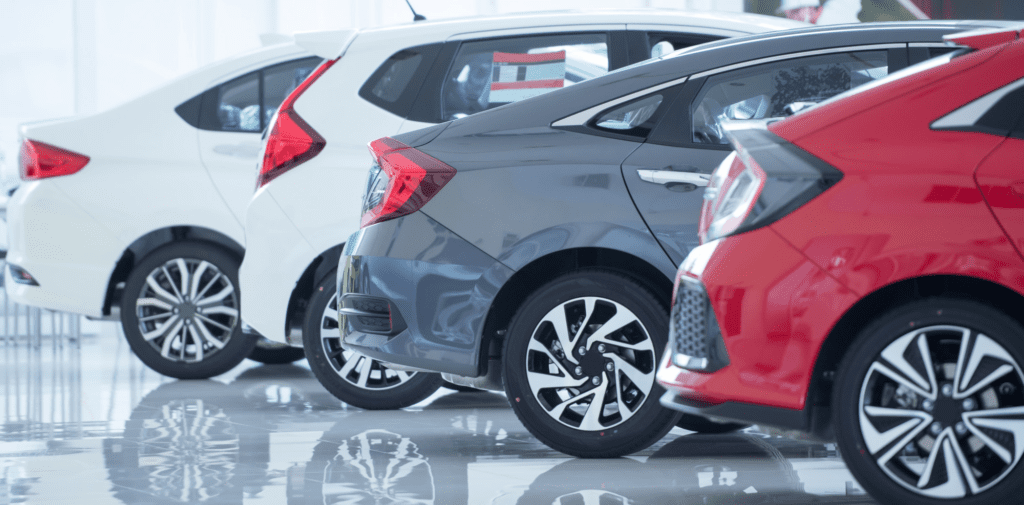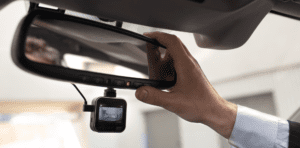Compare third-party, fire & theft car insurance
✔ Compare cheap third-party, fire & theft car insurance quotes
✔ Over 110 insurance providers
✔ Get a quote in minutes
✔ Save up to £504*
Third-party, fire and theft car insurance is a specific type of car insurance that provides a particular range of cover for your car. This policy is designed to offer compensation under certain conditions.
- What is Third-Party, Fire and Theft Car Insurance?
- What Does Third-Party, Fire and Theft Cover?
- What is Not Covered by Third-Party, Fire and Theft Car Insurance?
- What’s the Difference Between Third-Party Insurance, Third-Party, Fire and Theft, and Comprehensive Car Insurance?
- Is Third-Party, Fire and Theft Car Insurance the Right Policy for Me?
- Frequently asked questions
Keep reading to understand exactly what this insurance covers and to determine if it’s the suitable choice for your needs.
What is Third-Party, Fire and Theft Car Insurance?
Third-party, fire and theft insurance is a car insurance option that sits between the most basic and the most comprehensive forms of cover. Understanding its scope and limitations is crucial for making an informed insurance choice.


More Than Basic Third-Party Cover
- Extended Protection: This insurance goes beyond the basic third-party cover. While it includes all the benefits of third-party insurance, it also provides additional protection for specific scenarios.
- Third-Party Coverage: It covers damages or injuries you may cause to other people or their property in the event of an accident.
Added Fire and Theft Protection
- Theft Cover: One of the key additions to this policy is cover for the theft of your car. If your car is stolen, the insurance will compensate you.
- Fire Damage: It also covers damage to your car caused by fire, whether accidental or due to arson.
Limitations Compared to Comprehensive Car Insurance
- No Coverage for Own Car Damage (Accidents): Unlike a comprehensive policy, third-party, fire and theft insurance does not cover damages to your own car in the event of an accident that you cause.
- Limited Scope: It offers less cover than a comprehensive policy, which includes protection for accidental damage, vandalism, and more.
Legal Requirements in the UK
- Legal Minimum: In the UK, it is legally required to have at least third-party car insurance to drive on the roads. Third-party, fire, and theft insurance satisfies this legal requirement while providing additional protection.
- Compliance: Choosing this insurance ensures you comply with UK laws and have a level of cover that extends beyond the minimum legal requirement.
Ideal Situations for Third-Party, Fire and Theft Car Insurance
- Considerations for Vehicle Value: This type of insurance can be particularly suitable for car owners whose vehicles aren’t highly valuable but who still want protection against theft and fire.
- Balancing Cost and Coverage: It’s a good middle ground for those looking for more than basic protection without the higher premiums associated with comprehensive insurance.
Key Takeaways
Third-party, fire and theft car insurance offers a balanced level of protection, covering more than the basic third-party policy but less than comprehensive car insurance.
It’s a practical choice for those seeking additional peace of mind, especially concerning theft and fire, while keeping costs relatively lower than a comprehensive policy.
How much can you save on your car insurance?
What Does Third-Party, Fire and Theft Cover?
Third-party, fire and theft car insurance is a specific type of car insurance policy that offers targeted protection in three main areas: damage to third parties, fire damage, and theft. Understanding the extent of this cover is important for policyholders.


Cover for Third Parties
Liability to Others
- Damage to Other People’s Property: If you are at fault in an accident, this insurance covers the cost of repairs to the other person’s vehicle or property.
- Injury Compensation: It also includes cover for medical expenses and injury compensation for other individuals involved in the accident if they are injured.
Protection Against Fire
Fire Damage Cover
- Repair Costs for Fire Damage: The policy covers the cost of repairing your car if it’s damaged by fire. This applies to both accidental fires and deliberate acts of arson.
- Reporting Arson: In the case of arson, you are required to report the incident to the police and provide your insurance provider with the crime reference number for your claim to be processed.
Coverage for Theft
Theft and Related Damages
- Replacement if Car is Stolen: If your car is stolen and not recovered, the insurance covers the cost of replacing your vehicle.
- Repairing Theft-Related Damage: It also covers repair costs for any damage resulting from theft or attempted theft, such as a broken window.
- Audio and Navigation Systems: Some policies extend their cover to include car audio, satellite navigation, and entertainment systems, covering them in cases of theft or fire-related damage.
Additional Considerations
- Policy Variations: The exact cover details can vary between different insurance providers and policies. It’s crucial to check the specifics of your policy to understand the full extent of the cover.
- Valuation of Claims: In the event of theft or fire, the payout you receive will depend on the valuation of your car or the items claimed at the time of the incident.
Key Takeaways
Third-party, fire and theft car insurance offers a balance between basic third-party cover and more comprehensive policies.
It is tailored to protect against specific risks – liabilities to other parties, fire damage, and theft – making it a suitable option for many drivers who want more than just the minimum cover without the full extent of a comprehensive policy.
How much can you save on your car insurance?
What is Not Covered by Third-Party, Fire and Theft Car Insurance?


Exclusions in Cover
Own Vehicle Damage
- Accident-Related Damage: This insurance does not cover damages to your own vehicle if you are at fault in an accident. Any repair costs for your car in such a scenario will need to be funded out of your pocket.
Personal Possessions
- Items Inside the Car: The policy typically does not cover personal belongings inside the car, like your phone or laptop, if they are damaged in a crash.
Security Negligence
- Unsecured Vehicle: If your car is damaged or stolen due to your negligence, like leaving it unlocked or windows open, the insurance will not cover the repair or replacement costs.
Medical Expenses
- Personal Injuries: If you are injured in an accident, third-party, fire and theft insurance does not cover your medical expenses.
Cover by Other Parties
Accidents Caused by Others
- Liability of At-Fault Driver: If you are involved in an accident that is not your fault, the at-fault party’s insurance should cover the damages or injuries incurred by you.
Additional Points to Consider
Policy Specifics
- Check Your Policy Details: It’s important to read the specific terms and conditions of your policy, as cover can vary slightly between different insurance providers.
- Supplemental Coverage Options: Consider additional cover or separate policies for personal injury protection or covering personal belongings if these are concerns for you.
Risk Management
- Vehicle Security: Ensure that you take appropriate measures to secure your vehicle to avoid scenarios where claims might be denied due to negligence.
Key Takeaways
While third-party, fire and theft car insurance provides more cover than a basic third-party policy, it has notable exclusions, particularly concerning damage to your own vehicle, personal possessions, and medical costs.
Understanding these limitations is crucial in assessing whether this insurance level meets your needs or if additional cover is necessary.
How much can you save on your car insurance?
What’s the Difference Between Third-Party Insurance, Third-Party, Fire and Theft, and Comprehensive Car Insurance?
Understanding the differences between third-party insurance, third-party, fire and theft insurance, and comprehensive insurance is crucial for choosing the right cover for your car insurance needs.


Third-Party Only Car Insurance
Basic Legal Requirement
- Minimum Cover: Third-party car insurance is the legal minimum for driving a vehicle. It’s the most basic form of car insurance available.
- Liability for Damages and Injuries: This insurance covers damage to another person’s car and compensation for injuries to other people in an accident that you are at fault for.
Exclusions
- No Cover for Own Vehicle: It does not cover any damage to your own car, nor does it cover your own injuries if you are at fault in an accident.
- No Theft or Fire Cover: This policy does not include cover if your car is stolen or damaged due to fire.
Third-Party, Fire and Theft Car Insurance
Enhanced Basic Cover
- Intermediate Level of Protection: This insurance offers everything that third-party cover does but with additional protection against two specific risks.
- Fire and Theft Cover: It covers you if your car is stolen or damaged by fire, offering more peace of mind than basic third-party car insurance.
Comprehensive Car Insurance
Highest Level of Cover
- Broadest Protection: Comprehensive car insurance is the most inclusive type of car insurance. It includes all the covers of third-party and third-party, fire and theft insurance.
- Accident Coverage Regardless of Fault: This insurance covers damage to your car and your injuries, regardless of whether the accident was your fault.
- Additional Features: Often termed as the ‘bells and whistles’ option, it may include extra features like windscreen cover, courtesy car provision, cover for personal belongings in your car and breakdown cover.
- Widespread Availability: Some insurers primarily offer comprehensive cover, considering its broad protection.
Choosing the Right Cover
- Assessing Your Needs: The choice between these insurance types should be based on your car’s value, your driving habits, and your financial ability to handle potential losses.
- Cost vs Cover: While comprehensive insurance offers the most protection, it is generally more expensive than the other two. Conversely, third-party insurance is cheaper but offers the least protection.
Key Takeaways
Each type of insurance – third-party, third-party, fire and theft, and comprehensive – offers different levels of protection, catering to varying needs and budgets.
Understanding these differences is key to selecting an insurance policy that provides the right balance of cost and cover for your individual situation.
How much can you save on your car insurance?
Is Third-Party, Fire and Theft Car Insurance the Right Policy for Me?
Choosing the right car insurance policy depends on various factors unique to your situation. Third-party, fire and theft car insurance could be a suitable option for some, but not for everyone. Here’s how to evaluate if it’s right for you.


When Third-Party, Fire and Theft Car Insurance is a Good Fit
Vehicle Value and Repair Costs
- Low-Cost Repairs: If your car is relatively inexpensive to repair and spare parts are readily available, this policy might be adequate.
- Vehicle Worth: This insurance is a sensible choice if your car isn’t highly valuable and you can afford to replace it in case it’s written off.
- DIY Repairs: If you’re skilled in car repairs and confident in fixing your car yourself, this limited cover may suffice.
- Infrequent Driving: If you don’t drive very often, your risk of being involved in an accident is lower, making this more basic cover potentially suitable.
Considerations Before Choosing This Policy
Personal Readiness for Repairs
- Financial Preparedness for Repairs: If you’re not willing or able to pay for repairs to your own car in the event of an accident, third-party, fire and theft insurance might not be the best choice.
- Assessing Risk vs. Cost: Consider the likelihood of needing repairs against the potential cost savings of choosing this more limited policy.
Alternative Approach
Saving for Repairs
- Setting Aside Savings: An alternative strategy is to combine third-party, fire and theft insurance with saving money in a high-interest account. This way, you can build a fund for potential car repairs.
- Financial Flexibility: If you don’t end up needing the money for repairs, you can use these savings for other purposes, offering a balance between financial prudence and practical insurance cover.
Key Takeaways
Deciding whether third-party, fire and theft car insurance is right for you involves balancing the value and repairability of your car, your driving habits, and your financial situation.
It’s a policy that offers more than basic third-party cover but doesn’t provide the comprehensive protection some drivers might need. Carefully assess your individual circumstances and risk tolerance to make the best insurance choice for your needs.
How much can you save on your car insurance?
Frequently asked questions
Third-party damage refers to the harm or damage caused to someone else’s property, typically arising from an incident involving your vehicle. Understanding this concept is crucial for grasping the scope of third-party insurance cover.
Types of Third-Party Damage
- Damage to Other Vehicles: The most common form of third-party damage is to another person’s car, which can occur during road accidents where you are at fault.
- Property Damage: It’s not just limited to vehicles; this can also include damage to property like someone’s wall, fence, or any other structure hit by your car.
Exclusions in Third-Party Damage
- Excludes Own Vehicle: Importantly, third-party damage does not cover any harm or repairs needed for your own car. This means if you’re involved in an accident and your car is damaged, the repair costs for your vehicle are not covered under third-party damage.
Additional Cover under Third-Party Car Insurance
- Injury Compensation: Besides covering damage to other people’s property, third-party insurance often includes compensation for injuries you might cause to others in an accident. This is a crucial aspect, especially in serious accidents where others are harmed.
Understanding Third-Party Car Insurance
- Basic Liability Cover: Third-party insurance, which covers third-party damage, is the basic level of car insurance typically required by law. It’s designed to ensure that if you cause damage or injury to others, the costs are covered by your insurance, safeguarding you against significant financial liabilities.
The cost of your third-party, fire and theft car insurance is influenced by several factors. Notably, it includes your age, driving history, the location where you reside, and your annual mileage.
Essentially, your insurance premium reflects how probable your insurer thinks you are to file a claim and the potential size of the claim they might need to settle. For a more detailed understanding, you can explore our guide on how car insurance premiums are calculated.
Yes, you can accumulate a no-claims discount with most car insurance policies, including third-party, fire and theft insurance.
It’s a good idea to verify the specifics with your insurance provider to understand how this applies to your policy.
Yes, third-party, fire and theft car insurance exceeds the minimum legal requirements for driving in the UK. Furthermore, this level of cover is typically adequate for driving in most European countries.
In case you don’t have comprehensive cover, it’s probable that you will need to bear the costs for your car’s recovery if it becomes undrivable after an accident.
This holds true unless the responsibility lies with someone else, or if your policy explicitly states that recovery is included in your third-party, fire and theft cover.
For young drivers, third-party, fire and theft insurance might not necessarily be the better option. If by ‘better’ you mean more affordable, opting for less cover can appear to be a cost-effective choice.
However, in some cases, a comprehensive policy could be more economical.
In terms of protection, as a young driver with less experience, choosing comprehensive insurance is often a wiser decision. This type of policy covers damages to your own car in the event of an accident.
Considering that younger drivers are statistically more prone to accidents, investing in comprehensive cover might save you money over time.










